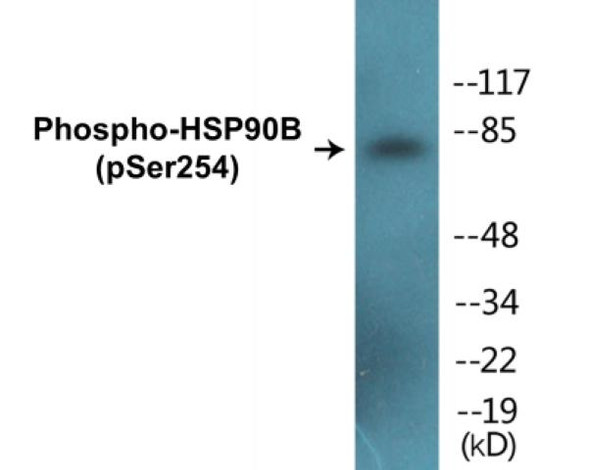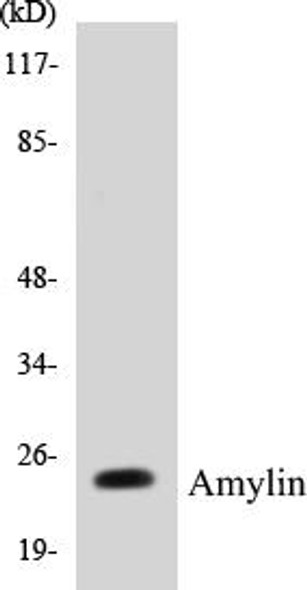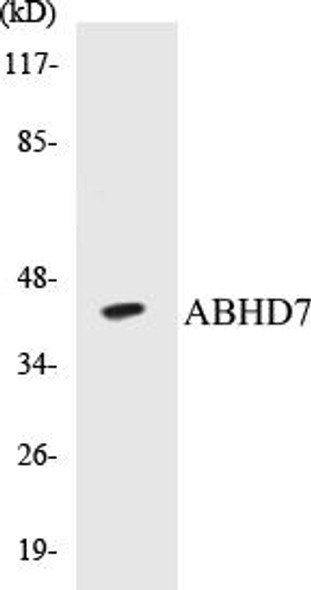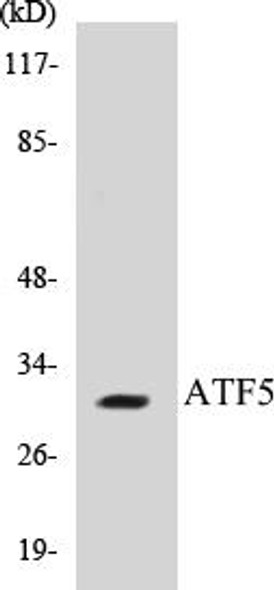Description
HSP90B Colorimetric Cell-Based ELISA Kit
The HSP90B Colorimetric Cell-Based ELISA Kit is a cutting-edge tool for the accurate measurement of HSP90B levels in cell lysates and cell culture supernatants. This kit is highly sensitive and specific, offering reliable and consistent results for a variety of research applications.HSP90B is a key molecular chaperone that plays a crucial role in the folding, stability, and function of a wide range of client proteins involved in cell proliferation, survival, and apoptosis. Dysregulation of HSP90B has been implicated in various diseases, including cancer, neurodegenerative disorders, and inflammatory conditions, making it a valuable biomarker for studying disease mechanisms and potential therapeutic interventions.
With the HSP90B Colorimetric Cell-Based ELISA Kit, researchers can accurately quantify HSP90B levels in biological samples, providing valuable insights into the role of this important protein in disease pathogenesis and potential therapeutic targeting. This kit is simple to use, with quick and easy protocols, making it an essential tool for researchers studying molecular chaperones and their impact on cellular processes.
| Product Name: | HSP90B Colorimetric Cell-Based ELISA Kit |
| Product Code: | CBCAB00702 |
| ELISA Type: | Cell-Based |
| Target: | HSP90B |
| Reactivity: | Human, Mouse, Rat |
| Dynamic Range: | > 5000 Cells |
| Detection Method: | Colorimetric 450 nmStorage/Stability:4°C/6 Months |
| Format: | 96-Well Microplate |
The HSP90B Colorimetric Cell-Based ELISA Kit is a convenient, lysate-free, high throughput and sensitive assay kit that can detect HSP90B protein expression profile in cells. The kit can be used for measuring the relative amounts of HSP90B in cultured cells as well as screening for the effects that various treatments, inhibitors (ie siRNA or chemicals), or activators have on HSP90B.
Qualitative determination of HSP90B concentration is achieved by an indirect ELISA format. In essence, HSP90B is captured by HSP90B-specific primary antibodies while the HRP-conjugated secondary antibodies bind the Fc region of the primary antibody. Through this binding, the HRP enzyme conjugated to the secondary antibody can catalyze a colorimetric reaction upon substrate addition. Due to the qualitative nature of the Cell-Based ELISA, multiple normalization methods are needed:
| 1. | A monoclonal antibody specific for human GAPDH is included to serve as an internal positive control in normalizing the target absorbance values. |
| 2. | Following the colorimetric measurement of HRP activity via substrate addition, the Crystal Violet whole-cell staining method may be used to determine cell density. After staining, the results can be analysed by normalizing the absorbance values to cell amounts, by which the plating difference can be adjusted. |
| Database Information: | Gene ID: 3326, UniProt ID: P08238, OMIM: 140572, Unigene: Hs.509736/Hs.701788 |
| Gene Symbol: | HSP90AB1 |
| Sub Type: | None |
| UniProt Protein Function: | HSP90B: Molecular chaperone that promotes the maturation, structural maintenance and proper regulation of specific target proteins involved for instance in cell cycle control and signal transduction. Undergoes a functional cycle that is linked to its ATPase activity. This cycle probably induces conformational changes in the client proteins, thereby causing their activation. Interacts dynamically with various co-chaperones that modulate its substrate recognition, ATPase cycle and chaperone function. Homodimer. Interacts with p53/TP53. Forms a complex with CDK6 and Hsp90/HSP90AB1. Interacts with UNC45A. Binding to UNC45A involves 2 UNC45A monomers per HSP90AB1 dimer. Interacts with CHORDC1 and DNAJC7. Interacts with FKBP4. Belongs to the heat shock protein 90 family. |
| UniProt Protein Details: | Protein type:Heat shock protein; Chaperone Chromosomal Location of Human Ortholog: 6p12 Cellular Component: apical plasma membrane; basolateral plasma membrane; brush border membrane; cell surface; cytoplasm; cytosol; inclusion body; melanosome; membrane; mitochondrion; nucleoplasm; signalosome Molecular Function:ATP binding; dATP binding; double-stranded RNA binding; GTP binding; histone deacetylase binding; kinase binding; nitric-oxide synthase regulator activity; protein binding; protein kinase binding; sulfonylurea receptor binding; TPR domain binding; unfolded protein binding Biological Process: axon guidance; innate immune response; negative regulation of neuron apoptosis; negative regulation of proteasomal ubiquitin-dependent protein catabolic process; placenta development; positive regulation of cell size; positive regulation of nitric oxide biosynthetic process; positive regulation of protein binding; positive regulation of protein import into nucleus, translocation; protein folding; regulation of protein ubiquitination; response to salt stress; response to unfolded protein; virion attachment to host cell surface receptor |
| NCBI Summary: | This gene encodes a member of the heat shock protein 90 family; these proteins are involved in signal transduction, protein folding and degradation and morphological evolution. This gene encodes the constitutive form of the cytosolic 90 kDa heat-shock protein and is thought to play a role in gastric apoptosis and inflammation. Alternative splicing results in multiple transcript variants. Pseudogenes have been identified on multiple chromosomes. [provided by RefSeq, Dec 2012] |
| UniProt Code: | P08238 |
| NCBI GenInfo Identifier: | 17865718 |
| NCBI Gene ID: | 3326 |
| NCBI Accession: | P08238.4 |
| UniProt Secondary Accession: | P08238,Q5T9W7, Q9NQW0, Q9NTK6, B2R5P0, |
| UniProt Related Accession: | P08238 |
| Molecular Weight: | 83,264 Da |
| NCBI Full Name: | Heat shock protein HSP 90-beta |
| NCBI Synonym Full Names: | heat shock protein 90kDa alpha family class B member 1 |
| NCBI Official Symbol: | HSP90AB1 |
| NCBI Official Synonym Symbols: | HSP84; HSPC2; HSPCB; D6S182; HSP90B |
| NCBI Protein Information: | heat shock protein HSP 90-beta |
| UniProt Protein Name: | Heat shock protein HSP 90-beta |
| UniProt Synonym Protein Names: | Heat shock 84 kDa; HSP 84; HSP84 |
| Protein Family: | Heat shock protein |
| UniProt Gene Name: | HSP90AB1 |
| UniProt Entry Name: | HS90B_HUMAN |
| Component | Quantity |
| 96-Well Cell Culture Clear-Bottom Microplate | 2 plates |
| 10X TBS | 24 mL |
| Quenching Buffer | 24 mL |
| Blocking Buffer | 50 mL |
| 15X Wash Buffer | 50 mL |
| Primary Antibody Diluent | 12 mL |
| 100x Anti-Phospho Target Antibody | 60 µL |
| 100x Anti-Target Antibody | 60 µL |
| Anti-GAPDH Antibody | 60 µL |
| HRP-Conjugated Anti-Rabbit IgG Antibody | 12 mL |
| HRP-Conjugated Anti-Mouse IgG Antibody | 12 mL |
| SDS Solution | 12 mL |
| Stop Solution | 24 mL |
| Ready-to-Use Substrate | 12 mL |
| Crystal Violet Solution | 12 mL |
| Adhesive Plate Seals | 2 seals |
The following materials and/or equipment are NOT provided in this kit but are necessary to successfully conduct the experiment:
- Microplate reader able to measure absorbance at 450 nm and/or 595 nm for Crystal Violet Cell Staining (Optional)
- Micropipettes with capability of measuring volumes ranging from 1 µL to 1 ml
- 37% formaldehyde (Sigma Cat# F-8775) or formaldehyde from other sources
- Squirt bottle, manifold dispenser, multichannel pipette reservoir or automated microplate washer
- Graph paper or computer software capable of generating or displaying logarithmic functions
- Absorbent papers or vacuum aspirator
- Test tubes or microfuge tubes capable of storing ≥1 ml
- Poly-L-Lysine (Sigma Cat# P4832 for suspension cells)
- Orbital shaker (optional)
- Deionized or sterile water
*Note: Protocols are specific to each batch/lot. For the correct instructions please follow the protocol included in your kit.
| Step | Procedure |
| 1. | Seed 200 µL of 20,000 adherent cells in culture medium in each well of a 96-well plate. The plates included in the kit are sterile and treated for cell culture. For suspension cells and loosely attached cells, coat the plates with 100 µL of 10 µg/ml Poly-L-Lysine (not included) to each well of a 96-well plate for 30 minutes at 37°C prior to adding cells. |
| 2. | Incubate the cells for overnight at 37°C, 5% CO2. |
| 3. | Treat the cells as desired. |
| 4. | Remove the cell culture medium and rinse with 200 µL of 1x TBS, twice. |
| 5. | Fix the cells by incubating with 100 µL of Fixing Solution for 20 minutes at room temperature. The 4% formaldehyde is used for adherent cells and 8% formaldehyde is used for suspension cells and loosely attached cells. |
| 6. | Remove the Fixing Solution and wash the plate 3 times with 200 µL 1x Wash Buffer for five minutes each time with gentle shaking on the orbital shaker. The plate can be stored at 4°C for a week. |
| 7. | Add 100 µL of Quenching Buffer and incubate for 20 minutes at room temperature. |
| 8. | Wash the plate 3 times with 1x Wash Buffer for 5 minutes each time. |
| 9. | Add 200 µL of Blocking Buffer and incubate for 1 hour at room temperature. |
| 10. | Wash 3 times with 200 µL of 1x Wash Buffer for 5 minutes each time. |
| 11. | Add 50 µL of 1x primary antibodies (Anti-HSP90B Antibody and/or Anti-GAPDH Antibody) to the corresponding wells, cover with Parafilm and incubate for 16 hours (overnight) at 4°C. If the target expression is known to be high, incubate for 2 hours at room temperature. |
| 12. | Wash 3 times with 200 µL of 1x Wash Buffer for 5 minutes each time. |
| 13. | Add 50 µL of 1x secondary antibodies (HRP-Conjugated AntiRabbit IgG Antibody or HRP-Conjugated Anti-Mouse IgG Antibody) to corresponding wells and incubate for 1.5 hours at room temperature. |
| 14. | Wash 3 times with 200 µL of 1x Wash Buffer for 5 minutes each time. |
| 15. | Add 50 µL of Ready-to-Use Substrate to each well and incubate for 30 minutes at room temperature in the dark. |
| 16. | Add 50 µL of Stop Solution to each well and read OD at 450 nm immediately using the microplate reader. |
(Additional Crystal Violet staining may be performed if desired – details of this may be found in the kit technical manual.)






